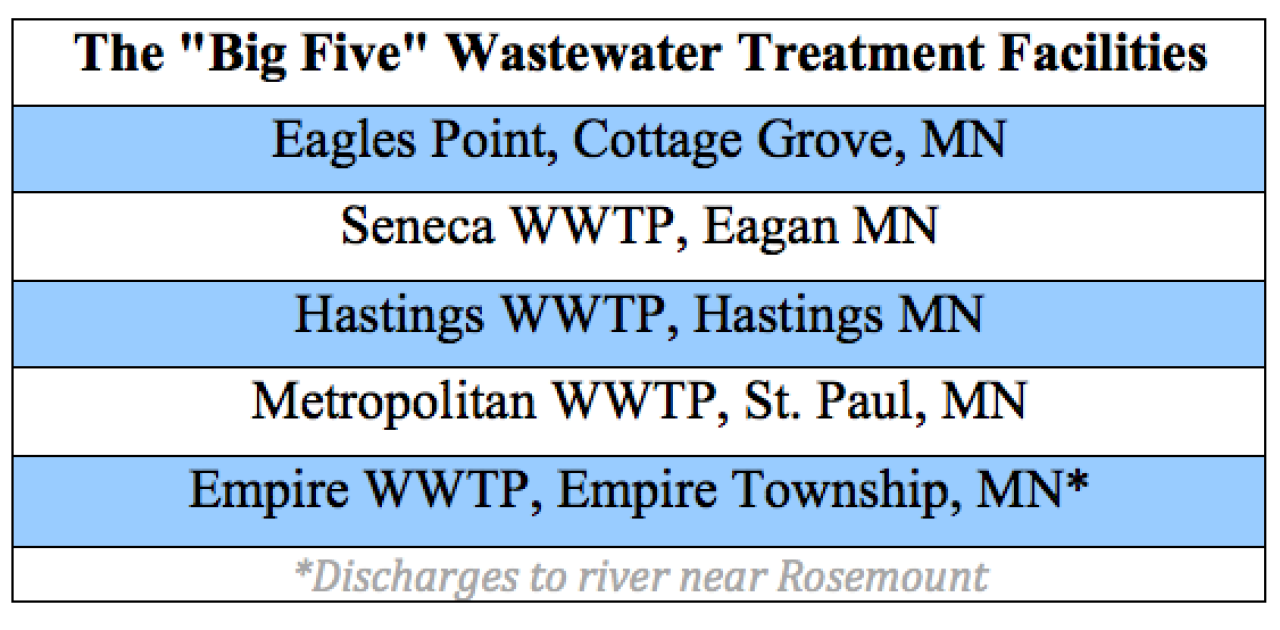FMR to file amicus brief in favor of pollution lawsuit

FMR, along with our friends at Clean Up the River Environment (CURE) and the Lake Pepin Legacy Alliance, will soon file an amicus brief ("friends of the court brief") in support of a recent lawsuit charging the state with failing to adequately control pollution to the Mississippi River.
The lawsuit, filed by the Minnesota Center for Environmental Advocacy (MCEA), faults the state for doing too little to protect the Mississippi River and Lake Pepin, and calls into question the state's plan to allow the "big five" metro-area wastewater treatment plants to increase their phosphorus pollution into the Mississippi River and Lake Pepin by 35%.
Why phosphorus pollution matters
Phosphorus is a common element in the environment and is essential for plant growth and health. However, excess levels of phosphorus in waters can harm aquatic life and recreation by reducing water clarity, depleting oxygen levels in the water, and causing toxic algae blooms. Phosphorus-fueled algae blooms have recently made national headlines by contaminating drinking water sources and threatening local economic activity.
Monitoring data shows high concentrations of phosphorus in surface waters across Minnesota, with as many as one quarter of rivers and streams at risk for exceeding the state's recently adopted phosphorus standards. While metro area wastewater treatment plants have made remarkable improvements in recent years, our 2012 State of the River Report showed that the metro area still sends too much phosphorus down stream to Lake Pepin and beyond.
Faults with the proposed permit
Rather than issue five individual permits, the state has approved the usual step of issuing a single "umbrella" permit for phosphorus pollution from all five plants together. Unfortunately, while this approach provides flexibility to these facilities, the methods used by the state to set this combined pollution limit has three major flaws:
- Increase in pollution limits: The new permit would allow a 35% increase, on average, above what the "big five" plants are discharging today. This will result in a maximum allowable phosphorus discharge of 159 metric tons of phosphorous each year into the metro Mississippi River, well above current levels discharged by these facilities.
- Unrealistic assumptions: To justify an increase in metro wastewater pollution limits, the state assumes unrealistic offsetting pollution reductions from upstream agricultural polluters and other sources. The plan assumes that water quality standards in the Mississippi River and Lake Pepin will be achieved by eliminating an additional 800 metric tons of phosphorus per year from upstream sources – including unregulated field agriculture operations - but offers no plan for how such reductions would be achieved.
Given that the state's recently completed Nutrient Reduction Strategy shows that phosphorus pollution from agricultural operations has increased since the 1980s, the assumptions used to justify the permit seem to be unrealistic and misguided. - The wrong target: Even if the pollution permit limits are met AND unrealistic upstream reductions in pollution from agricultural and other sources are secured (which remains extremely unlikely without new regulatory authority), the state's own models suggest that Lake Pepin would still fail to meet water quality standards in nine out of every 22 years.
Setting pollution limits that allow a water body not to meet water quality standards more than one out of every three years clearly violates the requirements of Federal law, which prohibits the issuance of pollution permits when conditions in the permit "cannot ensure compliance with applicable water quality requirements".
Given the magnitude of these flaws and the attendant risks to the Mississippi River and Lake Pepin, FMR and our allies feel compelled to file a amicus brief encouraging the court to take the needs of river communities, businesses and natural resources into account when reviewing the merits of the lawsuit.
Once our brief is filed (likely in December 2015), FMR and our allies will closely monitor the case in partnership with our friends and legal experts at MCEA. Look for more information on this case, and how it may influence the state's approach to addressing pollution to Minnesota's surface waters, in the months to come.